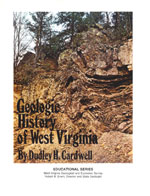
HOME | NEWS | INTERACTIVES | FEATURES | STORE

HOME | NEWS | INTERACTIVES | FEATURES | STORE
A volcano is an opening where magma erupts onto the surface as lava after rising from deep within the Earth. Not all magma is the same. Some magma contains as much as 75% silica (SiO2), whereas other magma contains as little as about 50%. The more silica in a magma, the higher its viscosity, or resistance to flow. Viscosity controls the type of volcano that forms. Eruptions of high-viscosity magma build very steep-sided lava domes. Low-viscosity magma produces cinder cones and thin sheet-like lava flows, and intermediate-viscosity magma creates moderately steep mountains called stratovolcanoes.
(Source: USGS)
Learn more about volcanoes in Alaska at the Alaska Volcano Observatory website.
Volcano Simulator © 2006 by CG Science.


Free Book Download:
Geologic History of West Virginia by Dudley H. Cardwell (1977)
>> Download the Book